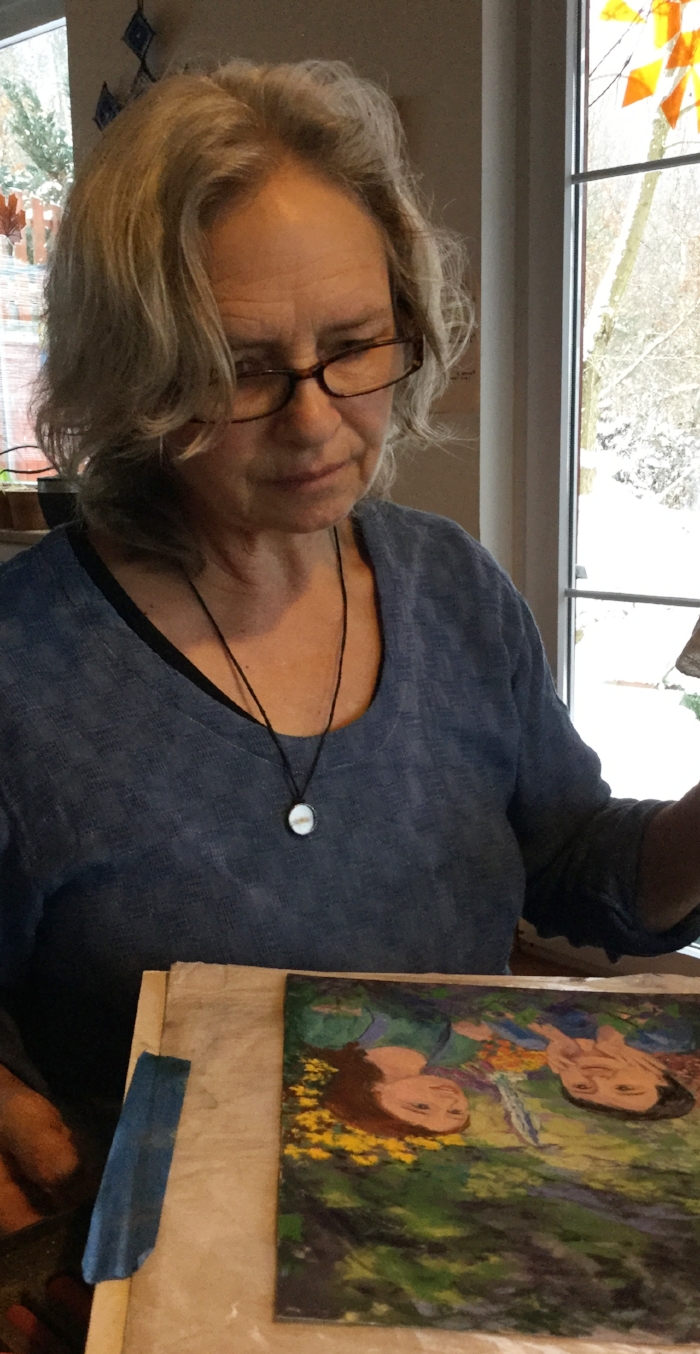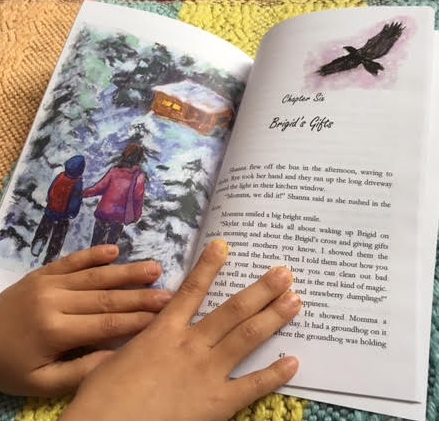I generally recommend that readers start at the beginning of series (The Soul and the Seed) because its world and characters are best experienced over the course of the story. But some readers here may be new to or long absent from the world of The Kyrennei Series, which looks eerily like our own world with a few subtle--yet nonetheless crucial--differences.
If you're new, you need to know that the Addin is a power cult that can forcibly take your will. The Addin Association is a conglomeration of powerful political and business leaders who run today's society. The narrator is Kai, a twenty-two-year-old Meikan student who has lived all his life in fear of the Addin. He was captured by them when a Wisconsin farm where he was hiding was attacked. He now expects that the Addin will take him and force him to become one of them. There is no hope of psychic resistance. Any human being can be taken and controlled by the Addin no matter how much they resist.
Kai is in love with Maya, a girl who is a member of the non-human Kyrennei race that the Addin are systematically annihilating because they disrupt Addin power. She was captured as well and Kai has every reason to believe she is already dead or soon will be.
Excerpt 1 - Kai Linden
After the shower, I expected to be taken back to the cell. Instead they put the restraints back on and led me up a flight of stairs and into another hallway that looked less like a prison and more like an office building. After a few turns the guy in front opened a door into a windowless room where three older men sat at a table drinking coffee.
The smell was overwhelming. The food they’d given me hadn’t been much and I was starving.
My heart pounded and I clenched my fists inside the restraints. This would be where they would take me.
I tried to control my breath. I didn’t want them to see how scared I was. The big guy leered at me whenever my muscles resisted him, and I knew he’d take pleasure in any display of my fear.
The men at the table watched me and sipped their coffee. My head was lowered, my hair hanging low so that they couldn’t entirely see my face.
Then one of the men at the table said, “Take that thing off his wrists.”
I remembered him from the attack on the farm. He had a wide smile with perfect teeth that reminded me of someone running for election.
“He might get violent, Mr. Bloom,” the guy behind me said.
“We can handle it. Thank you, Balshaw,” the man named Bloom said.
I thought of trying to grab a weapon. The two guys with me had guns at their belts. But I knew I wasn’t that fast. It probably wasn’t worth the energy. I felt too weak and tired to try—even for the hope that I might die with my soul intact.
The guy behind me unhooked the restraint and I kept looking down, avoiding eye contact with them. Fear was turning to confusion. If they had wanted to take me they could have.
“You’re name’s Kai, isn’t it?” Bloom said. His voice was low, almost friendly. “I know you hate us. Your kind have always been prejudiced that way. But I thought maybe you’d take some coffee at least.”
He poured from a silver pot on the table into a mug and put it in front of a fourth chair, his movements slow and deliberate.
“Come on,” he said. “Sit down and drink some coffee. We’re reasonable people and we’re not going to hurt you.”
I didn’t move from where I stood or lift my head. Did he think I was a complete idiot?
I didn’t know what he could be playing at, but the idea that I would now think he was benevolent was laughable. This man had overseen the destruction of Kaitlin’s farm. They had killed and taken my friends. He had done something with Maya. Of course, I hated him.
There was more silence. They waited. I rubbed my wrists, but then I had no place to put my hands. The track suit had no pockets. Eventually I ended up holding onto my own elbows. I didn’t care anymore if it made me look frightened. They knew I was scared.
I imagined I could feel their power buzz in the room like a live current. They could let me have my hands free, because there was no question of the outcome of any fight.
One of the other men at the table cleared his throat. At last Bloom sighed.
“All right,” he said. “Don’t drink the coffee then. But it’s your loss.”
He took a sip from his own cup and then leaned back, looking at me with his broad smile in place.
“Let’s be blunt here. You know I can get your cooperation if I want it.” He snapped his fingers and his eyes mocked me. “But that isn’t what I want right now. The fact is that there are things I want to know and there are things you want to know. I think we could come to an understanding about that.”
“If you think you can scare me into telling you about the Meikan sign, you might as well go ahead and kill me. You’re wasting your time,” I said.
Bloom and one of the other men at the table snickered under their breath and then downed slurps of coffee to smother their laughter. The third one didn’t change expressions but sat watching me with a scowl of undisguised disdain.
“Oh, sure, I can see why you’d think that,” Bloom said. “But believe me a lot has been tried in that department, for many many years. I don’t think you can tell us about it. The Kyris put some sort of spell on you Meikans so that you can’t speak coherently about it. Certainly if your people could, someone would have. Back in the Middle Ages, you know. All the various methods of torture and all that. But you don’t make any sense when you do try to tell it.”
I pulled in air through my mouth. “Then why don’t you get it over with. Anything else… you can make me do what you want. I know that.“
“So, you want to join, the way that other kid did?” Bloom said. “We’ve got a veritable flood of converts, it looks like.”
I didn’t answer. Was he toying with me? A cat playing with a mouse?
“How about this,” Bloom said, his voice musing, curious. “I know there must be things you want to know about your friends and such. You ask a question and then you answer a question. You can even go first. One question for free but after that you have to give an answer in order to get another answer.”
“If you want information, why don’t you just take me?” I struggled to keep my voice under control. I was gripping my elbows now to keep from shaking.
What a bastard! He was having fun.
“Is that your one free question?” Bloom asked. His eyes were the color of gravel.
I didn’t think they’d answer anyway, but I couldn’t help it. There was a question that burned inside me, every second. If there was any chance that they would answer, I had to try.
“No,” I said, my voice steadier. “Where’s Maya? Maya Gardner, the girl you—”
Bloom smiled and the others at the table smiled too, even the meaner-looking guy a bit. “You mean the Kyri girl you seemed so fond of? She’s here. In this building,” Bloom said without hesitation.
“Is she all right? What did you do to her?” I was desperate. I had lifted my head, my hands releasing their grip on my elbows.
I didn’t care that they probably wouldn’t tell the truth. My heart was in my throat. I knew I couldn’t do anything to help Maya, but the thought that she might be nearby, that she might still be alive…
“One question,” Bloom said. “That was the deal. You want to ask another, you have to answer one of mine. And you could always sit down and have coffee while we do it.”
I clenched my fists again. My back felt like it would burst with tension. It made no sense. But if they would answer…
“What’s the question?” I asked.
“Were there other Kyris at that farm? Most of your friends there ended up dead, I’m sorry to say,” he said, clicking his tongue with obviously fake regret.
“You took Jamaal!” my words came out with hot fury. I couldn’t hold it back. “You have to know that already. You could test their blood even if they were dead anyway. Why ask me?”
“Because I want to ask you,” Bloom said, his voice still smooth, curious. “Why is my business. If you want to ask your question, you answer mine.”
It wasn’t like I was giving away any sensitive information then. I was being interrogated by the Addin and yet they weren’t getting anything out of me that they didn’t already know. I wouldn’t have thought I’d ever answer their questions voluntarily but… under the circumstances. Well, what did it matter?




































































